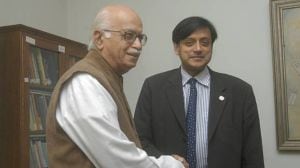Lending dearer,RBI hikes key rates 0.25%
Interest rates on loans from personal,home,auto to project finance are set to rise gradually with the Reserve Bank of India hiking key short term rates and banks cash reserve requirement by 25 basis points....
Interest rates on loans from personal,home,auto to project finance are set to rise gradually with the Reserve Bank of India hiking key short term rates and banks cash reserve requirement by 25 basis points each in a bid to tame rampaging inflation.
The RBI move the second policy action in a month is expected to push up the cost of funds of banks and bring down liquidity in the system.
In a decision that will lead to Rs 12,500 crore being sucked out of the banking system,the RBI,in its Annual Policy Statement for 2010-11,raised cash reserve ratio portion of deposits to be kept with the RBI of banks by 25 basis
points from 5.75 per cent to 6.0 per cent.
Continuing its exit from the accommodative monetary policy stance,adopted to tackle the global crisis and economic downturn in 2008-09,the central bank hiked repo and reverse repo (the rates at which it lends and borrows short-term funds from banks) by 25 basis points each to 5.25 per cent and 3.75 per cent,respectively. These rates were hiked by an identical margin on March 19.
Unveiling the policy here today,RBI Governor D Subbarao said that despite the increase of 25 basis points each in the repo rate and the reverse repo rate in mid-March 2010,the real policy rates were still negative.
With the recovery now firmly in place,we need to move in a calibrated manner in the direction of normalising our policy instruments. The current episode of inflation,which was triggered by supply side factors,is developing into a wider inflationary process. Demand side pressures are now clearly discernible. There is,therefore,need to ensure that demand side inflation does not become entrenched, he said.
Bankers said interest rates are set to rise as liquidity will dry up further and cost of funds is on the rise.
Liquidity will dry up once the credit demand picks up in the current fiscal. Hence interest rates are set to go up. Interest rate is determined by demand,supply and finally,the cost of funds. As some changes in credit pick-up will take place now,we see some changes in its pricing, said SBI chairman OP Bhatt.
Notwithstanding the tightening of the monetary policy,the RBI is optimistic about the economy expanding by 8 per cent this fiscal. The Indian economy is firmly on the recovery path. The baseline projection of real GDP growth for 2010-11 is placed at 8 per cent with an upside bias, the bank said. GDP growth for FY 10 was seen at 7.2-7.5 per cent.
The RBI Governor admitted that the higher government borrowing is a dilemma for the central bank.
Notwithstanding lower budgeted government borrowings in 2010-11 than in the year before,fresh issuance of securities will be 36.3 per cent higher than in the previous year. This presents a dilemma for the Reserve Bank. While monetary policy considerations demand that surplus liquidity should be absorbed,debt management considerations warrant supportive liquidity conditions. The Reserve Bank,therefore,has to do a fine balancing act and ensure that while absorbing excess liquidity,the government borrowing programme is not hampered, Subbarao said.
The Reserve Bank will come out with a discussion paper on new norms for granting banking licences to private sector companies and non-banking financial companies by July-end. It has also decided to constitute a working group with the representatives from the Government,the Reserve Bank,the SEBI,the IRDA and the Indian Banks Association to recommend a roadmap for the introduction of a holding company structure together with the required legislative amendment/framework.



- 01
- 02
- 03
- 04
- 05




























